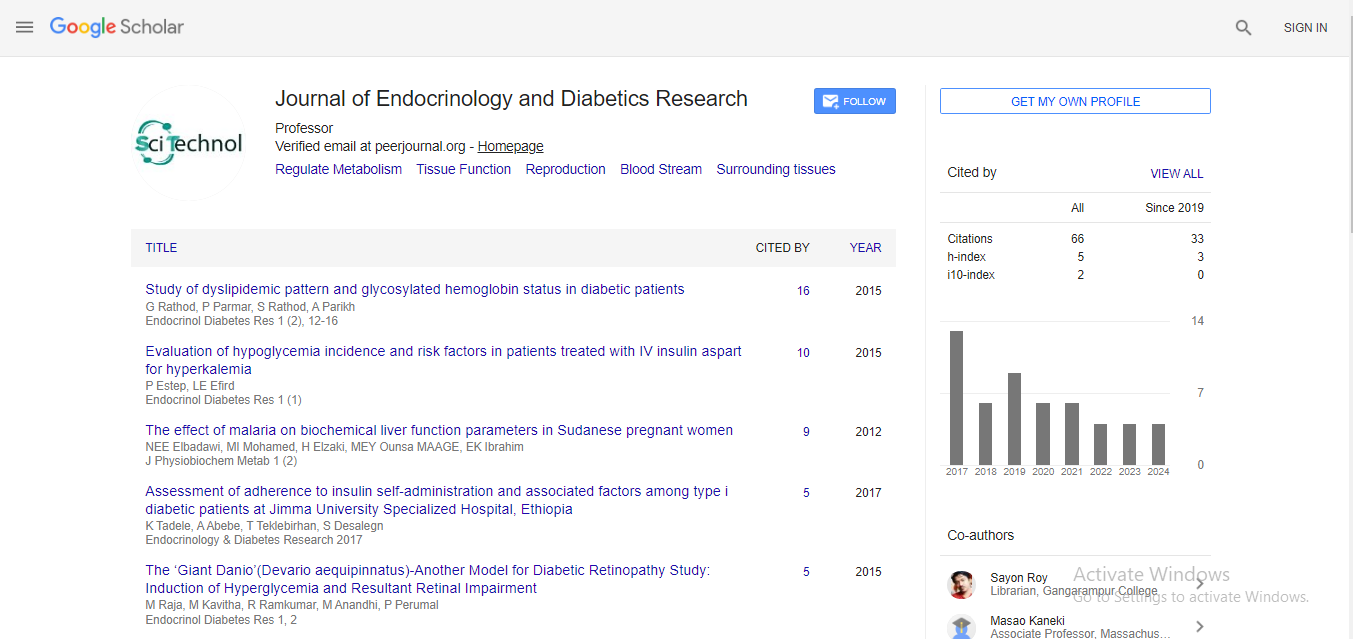Editorial, Endocrinol Diabetes Res Vol: 4 Issue: 1
The Importance of Gene X Environment Interactions in Diabetic Nephropathy
Everett CJ*
US Department of Veterans Affairs, Ralph H. Johnson VA Medical Center, Charleston, SC, USA
*Corresponding Author : Charles J. Everett
Department of Public Health Sciences, Medical University of South Carolina, Charleston, SC, USA
E-mail: everettc@musc.edu
Received: December 12, 2017 Accepted: March 30, 2018 Published: April 03, 2018
Citation: Everett CJ (2018) The Importance of Gene X Environment Interactions in Diabetic Nephropathy. Endocrinol Diabetes Res 4:1. doi: 10.4172/2470-7570.1000e102
Keywords: Nutrition
Editorial
A year ago I was working on a manuscript revision for the journal Environmental Pollution. A reviewer had objected to my characterization of a finding as a case of reverse causality. I was looking at diabetic nephropathy in Mexican Americans using the 1999-2004 National Health and Nutrition Examination Survey [1]. In our study nephropathy was defined as microalbuminuria or macroalbuminuria. The data showed an odds ratio of 14.95 (95% CI 2.96-75.48) for the fourth quartile of p,p’-DDE (dichlorodiphenyldichloroethylene) compared to less than the median. DDE is a metabolite of the pesticide DDT (dichlorodiphenyltrichloroethane), and p,p’-DDE is a common isomer of DDE. I had assumed the result had to be due to reverse causality because the odds ratio was so large. For this to be true diabetic nephropathy would have to precede a rise in p,p’-DDE concentrations. As part of the reviewer’s argument he suggested a gene X environment interaction hypothesis would be more plausible and cited Siddarth et al. [2]. Siddarth et al. studied polymorphism of the xenobiotic metabolizing enzyme glutathione S-transferase (GST) genotypes and compared p,p’-DDE in chronic kidney disease patients, that did not have diabetes, to age and sex matched healthy controls in India (N=540). The GSTM1(-)/GSTT1(-) genotype (absence of both) was associated with chronic kidney disease having an odds ratio of 1.81 (95% CI 1.08-3.03), and the third tertile of p,p’-DDE had an odds ratio of 2.70 (95% CI 1.04-7.02) for chronic kidney disease compared to the first tertile. Therefore the absence of both GSTM1 and GSTT1 results in less p,p’-DDE being metabolized by chronic kidney disease patients with the genotype. Investigating further I found an article by Datta et al., which was also from India, and gave relevant information (N=200) [3]. In this study kidney disease was defined as microalbuminuria or overt proteinuria, which is similar to our definition of nephropathy for Mexican Americans. The proportion with the GSTM1(-)/ GSTT1(-) genotype was 6% for healthy controls, 18% for diabetes without kidney disease, 32% for diabetes with kidney disease, and 18% for nondiabetic kidney disease. Hence we hypothesized that our Mexican Americans having diabetes with nephropathy had a higher prevalence of the GSTM1 (-)/GSTT1 (-) genotype, or another xenobiotic metabolizing enzyme genotype, than our diabetes without nephropathy subjects. As we reported associations, we could not rule out reverse causality, but the evidence in the literature on GSTM1 and GSTT1 gene polymorphism provides a strong case for a gene X environment interaction in our Mexican Americans that had diabetic nephropathy.
References
- Everett CJ, Thompson OM, Dismuke CE (2017) Exposure to DDT and diabetic nephropathy in the 1999-2004 National Health and Nutrition Examination Survey. Environmental Pollution 222: 132-137.
- Siddarth M, Datta SK, Mustafa MD, Ahmed RS, Banerjee BD, et al. (2014) Increased level of organochlorine pesticides in chronic kidney disease patients of unknown etiology: Role of GSTM1/GSTT1 polymorphism. Chemosphere 96: 174-179.
- Datta SK, Kumar V, Pathak R, Tripathi AK, Ahmed RS, et al. (2010) Association of glutathione S-transferase M1 and T1 gene polymorphism with oxidative stress in diabetic and non diabetic chronic kidney disease. Renal Failure 32: 1189-1195.
 Spanish
Spanish  Chinese
Chinese  Russian
Russian  German
German  French
French  Japanese
Japanese  Portuguese
Portuguese  Hindi
Hindi 


